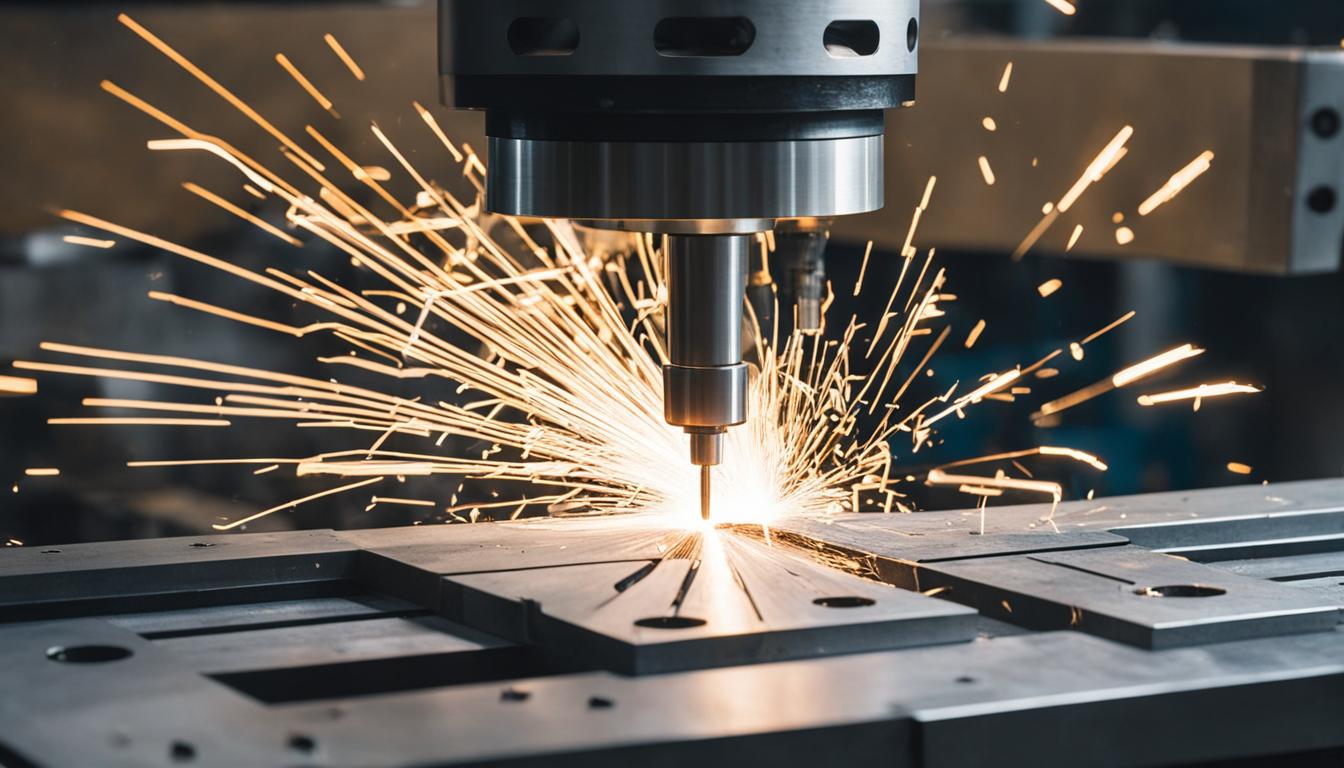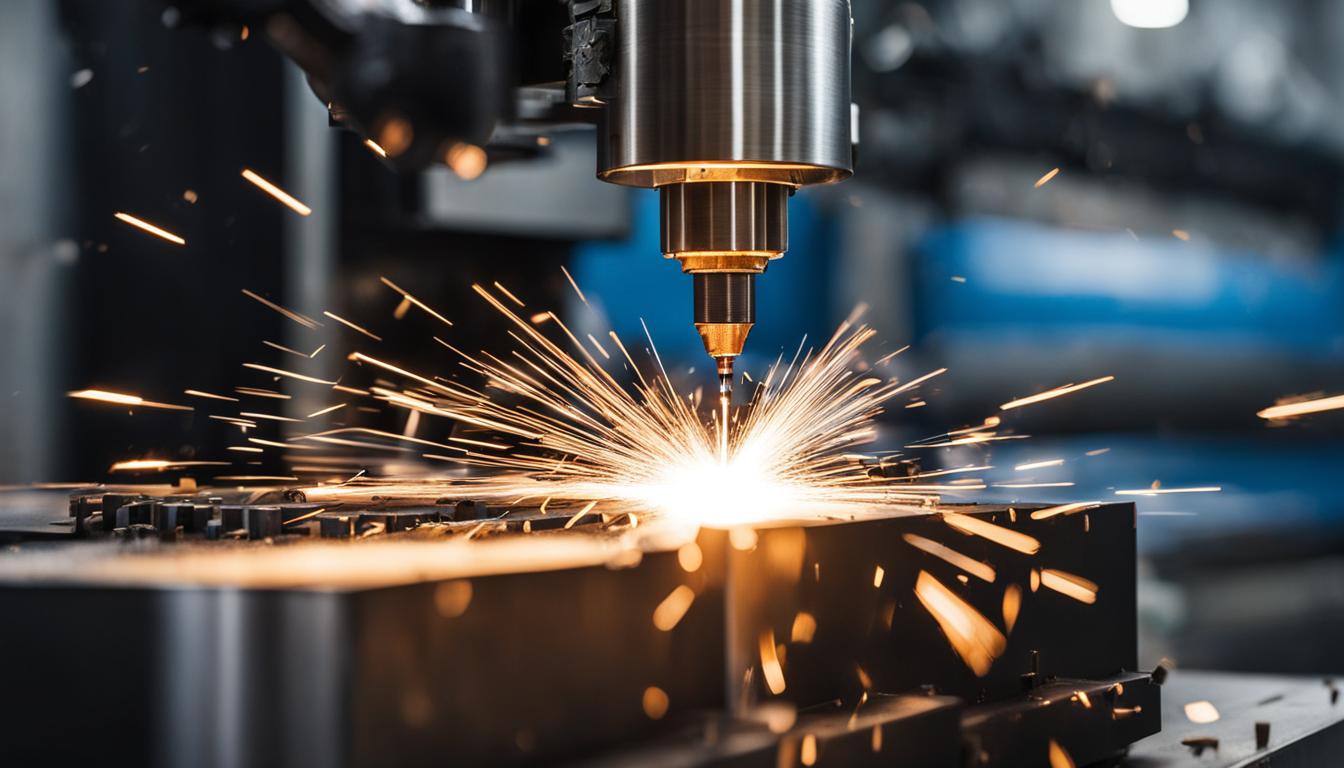CNC machining services play a crucial role in various industries, offering precision and efficiency in the production of custom-designed parts. Whether you are in need of CNC milling services, CNC turning services, or other advanced CNC machining processes, understanding the ins and outs of CNC machining can help you make informed decisions for your manufacturing needs. In this article, we will provide an overview of CNC machining and explore its various applications and benefits.
Key Takeaways
- CNC machining is a subtractive manufacturing process that uses computer numerical control to remove material from a stock piece and create custom-designed parts.
- It offers high precision and accuracy, making it ideal for industries such as large CNC machining, telecommunications, and aerospace.
- CNC machining encompasses a range of mechanical operations, including drilling, milling, turning, and more.
- The process requires specialized equipment and components, including CAD/CAM software, G-code, tooling, and spindles.
- CNC machining can be performed on various materials, including metals, plastics, wood, foam, and composites.
Overview of CNC Machining Process
The CNC machining process is a crucial part of the manufacturing industry. It is a subtractive manufacturing process that utilizes computerized controls and machine tools to remove layers of material from a stock piece, resulting in the creation of custom-designed parts. CNC machining is widely used in various industries, including automotive, aerospace, and construction.
Unlike CNC machines, which are programmable machines capable of autonomously performing CNC machining operations, CNC machining refers to the entire process. It involves the use of advanced machinery to precisely carve, drill, and shape materials to meet specific design requirements.
As a subtractive manufacturing method, CNC machining excels at creating intricate and precise parts from a wide range of materials. It offers high precision and accuracy, making it ideal for one-off and medium-volume production runs. Additionally, CNC machining allows manufacturers to work with various materials, including metals, plastics, wood, foam, and composites.
Industries such as automotive, aerospace, and construction heavily rely on CNC machining for their manufacturing needs. Whether it’s creating critical components for engines or crafting intricate parts for aircraft, CNC machining plays a vital role in ensuring the quality and functionality of the end product.
However, it’s important to note that while CNC machining has many advantages, there are limitations. The complexity of part design and the cost-effectiveness of producing complex parts can be challenging. Manufacturing highly intricate components may require additional processes or specialized equipment, which can increase production costs.
| Pros of CNC Machining Process | Cons of CNC Machining Process |
|---|---|
|
|
Types of CNC Machining Operations
CNC machining encompasses various mechanical operations, including drilling, milling, and turning. Each operation serves a distinct purpose in the manufacturing process, allowing for precise customization and efficient production. Here are the key types of CNC machining operations:
CNC Drilling
CNC drilling is the process of creating cylindrical holes in the workpiece using multi-point drill bits. This operation is commonly used in industries such as automotive, aerospace, and construction to produce holes of different diameters and depths. CNC drilling ensures accuracy and consistency, resulting in high-quality parts and components.
CNC Milling
CNC milling is a versatile machining process that involves removing material from the workpiece using rotary cutters. This operation can produce a wide range of complex shapes, including slots, pockets, and contours. CNC milling is commonly used in industries such as manufacturing, prototyping, and engineering for precise and efficient material removal.
CNC Turning
CNC turning is the process of cutting or shaping the workpiece using a single-point cutting tool. The workpiece rotates while the cutting tool moves along its axis, resulting in the desired shape. CNC turning is widely used in industries such as automotive, aerospace, and medical to create cylindrical components, including shafts, pins, and valves.
Other CNC Machining Operations
In addition to drilling, milling, and turning, CNC machining encompasses various other operations. These include counterboring, countersinking, reaming, and tapping. Counterboring involves creating a recess at the end of a drilled hole to accommodate screws or bolts. Countersinking creates a cone-shaped recess for flush mounting of screws. Reaming is the process of finishing and smoothing the walls of drilled holes for precision and accuracy. Tapping creates internal threads in drilled holes to accommodate screws or bolts. Each of these operations plays a crucial role in achieving the desired final product.

Comparison of CNC Machining Operations
| Operation | Purpose | Key Features | Applications |
|---|---|---|---|
| CNC Drilling | Create cylindrical holes | Multi-point drill bits | Automotive, aerospace, construction |
| CNC Milling | Remove material, create complex shapes | Rotary cutters | Manufacturing, prototyping, engineering |
| CNC Turning | Cut and shape cylindrical components | Single-point cutting tool | Automotive, aerospace, medical |
| Counterboring | Create a recess for screws or bolts | Specialized drill bits | Construction, machinery |
| Countersinking | Create a cone-shaped recess for flush mounting | Specialized countersinking tools | Furniture, metalworking |
| Reaming | Finish and smooth drilled holes | Reaming tools | Metalworking, automotive |
| Tapping | Create internal threads in drilled holes | Tapping tools | Manufacturing, construction |
CNC Machining Equipment and Components
CNC machining requires specialized equipment and components to execute precise and efficient manufacturing processes. Let’s explore the essential elements involved in CNC machining:
CAD/CAM Software
The CNC machining process begins with creating a computer-aided design (CAD) 3D model of the desired part. This model serves as the foundation for generating a CNC program that outlines the specific instructions for the CNC machine to follow. Computer-aided manufacturing (CAM) software is used to convert the CAD model into a CNC program, ensuring seamless communication between the design and machining stages.
G-code and M-code
G-code and M-code are standard programming languages used in CNC machining. G-code represents the specific tool paths, feed rates, and spindle speeds, while M-code controls auxiliary functions such as coolant flow and tool changes. These codes provide a precise and systematic way to communicate instructions to the CNC machine, enabling it to execute complex machining operations with accuracy.
Tooling
Tooling refers to the various cutting tools required to perform specific machining operations. Common types of tooling include drill bits, end mills, taps, and reamers, among others. These tools, made of high-speed steel or carbide, are carefully selected based on the material being machined and the desired outcome. Proper tooling is essential for achieving precise cuts and maintaining high-quality standards.
Spindle
The spindle is a vital component of a CNC machine that holds and rotates the cutting tool during machining. It provides the necessary rotational movement and power to perform various cutting operations with precision. The spindle’s speed and direction can be controlled using the CNC program, allowing for optimal machining conditions for different materials.
Machinery Spindles
Machinery spindles serve as the core component of CNC machines, determining the overall performance and capabilities of the equipment. They are engineered to withstand high-speed rotations and maintain stability during machining operations. Depending on the machine’s design, it may feature multiple spindles for simultaneous machining or specialized spindles for specific tasks, such as milling or turning.
Machinery Vises
Machinery vises are used to secure the workpiece in place during CNC machining. They provide stability and precision by clamping the material firmly to the machine’s worktable. Vises come in various sizes and configurations to accommodate different workpiece dimensions and shapes. Proper selection and setup of machinery vises are crucial for ensuring accurate machining and minimizing errors.
The combination of advanced CNC machine programming, CAD/CAM software, precise G-code and M-code instructions, carefully chosen tooling, reliable spindles, and secure machinery vises enables CNC machines to deliver exceptional precision, efficiency, and consistency in the manufacturing process.
CNC Machining Materials
CNC machining is a versatile manufacturing process that can be applied to a wide range of materials. The choice of material depends on the specific requirements of the application, including strength, durability, and aesthetics. Here are some of the common materials used in CNC machining:
Metal
Metal is one of the most popular materials for CNC machining due to its strength and durability. It can be machined into various shapes and sizes, making it suitable for a wide range of applications. Common metals used in CNC machining include:
- Brass
- Aluminum
- Stainless Steel
- Titanium
- Inconel
Plastic
Plastics are widely used in CNC machining due to their versatility and ease of machining. They can be machined into intricate shapes and offer excellent chemical resistance. Some common plastics used in CNC machining include:
- ABS
- Nylon
- Polycarbonate
- Polypropylene
- Acrylic
Wood
Wood is a popular choice for CNC machining, especially for decorative and artistic applications. It can be easily shaped and carved to create intricate designs. Common types of wood used in CNC machining include:
- Oak
- Maple
- Cherry
- Walnut
- Mahogany
Foam
Foam is commonly used in CNC machining for packaging and insulation purposes. It can be easily shaped and cut into custom forms. Some common foams used in CNC machining include:
- Expanded Polystyrene (EPS)
- Polyurethane Foam
- Polyethylene Foam
- EVA Foam
Composites
Composites are materials that consist of two or more constituent materials with different physical and chemical properties. They are widely used in aerospace and marine applications due to their high strength-to-weight ratio. Common composite materials used in CNC machining include:
- Carbon Fiber
- Fiberglass
- Kevlar
By selecting the appropriate material for a CNC machining project, manufacturers can ensure that their parts meet the desired specifications and performance requirements.
Alternatives to Using a CNC Machine
While CNC machining is a widely used manufacturing process, there are alternative methods available that offer unique advantages and applications. One such alternative is additive manufacturing, commonly known as 3D printing. In this process, layers of material are sequentially deposited to build up a three-dimensional object. 3D printing allows for complex geometries and the production of customized parts with minimal waste. It is particularly suitable for rapid prototyping and small-batch production.
Another alternative to CNC machining is formative manufacturing, which involves shaping and deforming materials to achieve the desired form. One formative manufacturing method is liquid injection molding, where liquid material is injected into a mold and then solidified. This process is commonly used for producing intricate and highly detailed parts, especially in industries such as automotive and consumer electronics.
Each alternative method, whether it is additive manufacturing or formative manufacturing, has its own set of advantages and limitations. Understanding these alternatives allows manufacturers to choose the most appropriate method for their specific needs. Whether it’s the need for high precision and cost-effectiveness provided by CNC machining, the flexibility and customization offered by 3D printing, or the complex part production capability of liquid injection molding, manufacturers can explore a range of options to optimize their manufacturing processes.
